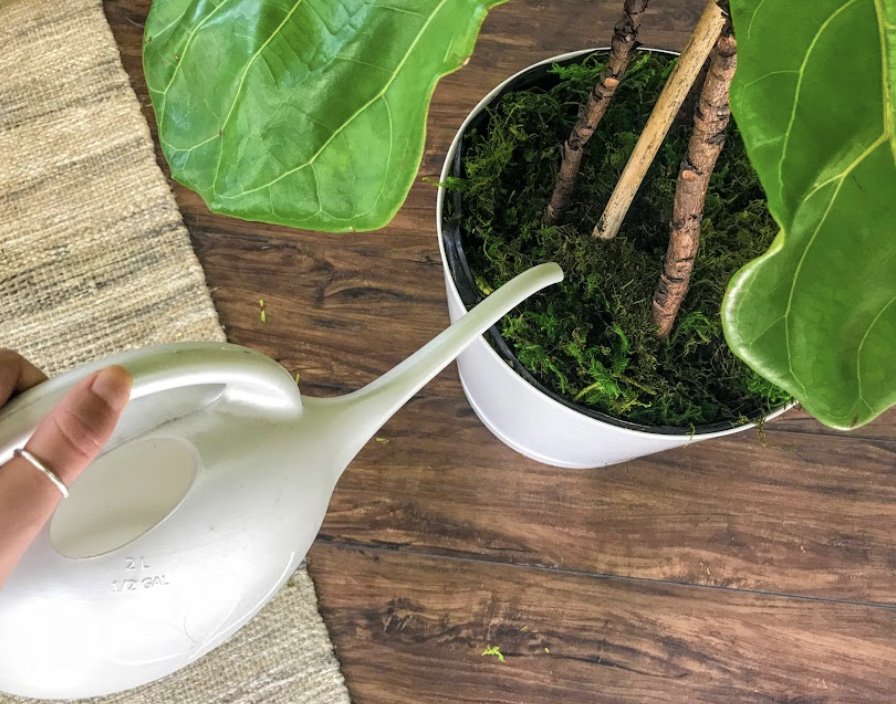6 tips and tricks to improve your watering routine
Watering a potted houseplant seems obvious, right ? Just grab some water and pour - what more is there to know?
Actually, there's a lot! Watering plants is both incredibly simple and also quite an art. From the basics (don't overwater!) to more advanced tricks (ever tried bottom watering?), improve your watering routine with these simple tips and tricks.
1. Touch the soil before watering
The best way to tell if a plant needs water is to check if the soil is dry. Gently push your finger into the top of the soil and check for moisture. If it's still wet, that means it probably has enough water right now. If there is any decorative moss on your soil, be sure to remove it first. Note that in general, plants in smaller pots will need to be watered more often, simply because there isn't as much potting soil to keep the moisture in.
2. Water the soil evenly
Be sure to water all around the plant, not just in one spot. The plant will grow more evenly and be less stressed if it gets water from all its roots. Water around the edges of the pot, as this is where the roots gather. This makes it easier for your plant to drink and get an even saturation.
3. Use room temperature water
Do not use water that is too hot or too cold. Water at room temperature (about 20°C) is optimal for nutrient absorption and does not give your plant a thermal shock. Plants like to be comfortable too!
HOUSE OF BOTANICALS WATERING CAN AND SPRAYER
Simple, elegant and functional, this lightweight indoor watering can features a traditional spout for easy access and watering, as well as a spray bottle to mist your plants for optimal care.
4. Adapt your watering to the season
Your plant's water needs vary depending on whether it's in a growing season or a dormant season. You'll need more water in the spring and summer, when your plant is growing. Plants use less energy in the fall and winter because they are resting. There is less light and part of their natural life cycle causes them to be slightly dormant at this time of year. As the days get shorter, even in the fall, adjust your watering schedule to make sure your plant doesn't get too much water. But regardless of the season, make sure your plant is not placed in front of an air vent where it would receive hot or cold drafts, which could dry out its soil and cause serious health problems.
5. Try watering from below
Bottom watering is a method of watering that involves letting the bottom half of the plant soak up water (instead of pouring it on top). This allows the plant to drink as much as it wants through its roots and leave behind what it doesn't want. Let your plant soak in a few inches of water for a few hours and notice how the water starts to magically disappear! Drain your plant well before replacing it.
6. Avoid overwatering
Finally, and probably the most important thing to keep in mind when watering your plants: don't overwater! Plants that have more water in the soil than they can use will develop root rot. This happens when the roots can't get the air they need because they are surrounded by water for a long time and start to decay. To avoid this, use lighter soils (actually, when we say soil, we mean potting soil), as well as pots with drainage holes, or if you are using a planter, elevate the pot with things like clay balls. Be sure to let your plant dry out a bit between waterings and occasionally lift it out of its decorative container to make sure it's not sitting in water.
Discover botanical alchemy !
Take care of your precious plants with our range of 100% natural plant care products. These essential plant care products are formulated in-house and manufactured locally in France.


